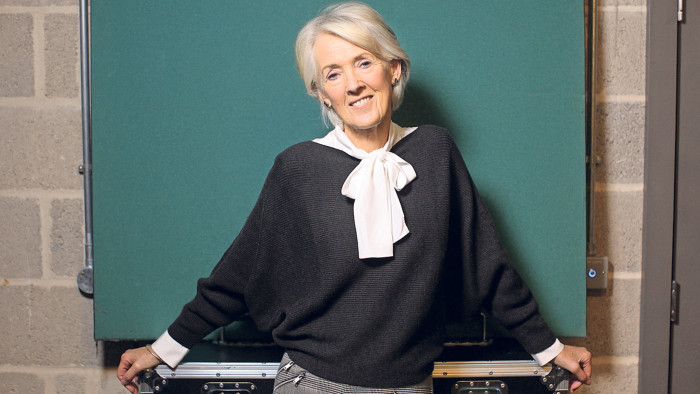Opinion: City women showed me how the office uniform has changed

Roula Khalaf, Editor of the FT, selects her favourite stories in this weekly newsletter.
Remember Margaret Thatcher’s wardrobe? No, not her policies or her voice or the effect she had on François Mitterrand, but her clothes. The well cut Aquascutum suits were accessorised with slightly suburban lapel brooches and charm bracelets, and garnished with that exquisitely crafted symbol of women in a certain kind of authority — the Queen carries them, after all — a Launer handbag.
That, more than 30 years ago, was the uniform not just of political female power in the western world, but of female power in general.
It was not exactly masculine, but it had the traditional, restrained convention and character of male tailoring. Lower down the power scale, it was echoed in uniform dark trouser suits, worn over pale T-shirts or camisoles, which carried the same message as the Aquascutum suits: “We may be women but we can assure you that we are fully competent to do the job — look at the anodyne way we are dressing and do not be alarmed.”
The professional world, still overwhelmingly male, required an adherence to the reassurance of dark colours, a measure of formality and, above all, a lack of emphasis on any potential the female body might have to arouse and thus distract.
There was bound to be a backlash. Especially as women began to seep into the professional workforce in ever greater numbers, not least into those areas of the workforce — finance, the law, science, the surgical side of medicine — that had traditionally been male.
It was the US technology sector that managed to effect a leap into sartorial revolution in the working wardrobe for both sexes. This was a new world that encouraged men to go to work in a dress-down uniform of jeans and T-shirts, but whose top female executives adopted the style of the cocktail party, all sleeveless bodycon dresses worn with high heels and lavish hair.
Those were the women, in clothing terms, I was expecting to find when I started the research for my novel about women, work and friendship, City of Friends.
I had imagined the City of London and Canary Wharf would be peopled with senior women who started every day with a dawn blow-dry. I was, in most cases, quite wrong. I met 15 women who are all — quietly — in significant positions in the upper echelons of the finance industry, be it academe, banking, private equity or running their own companies. Only two dressed in a way I would describe as overtly feminine and only one had a furry pom pom clipped to her handbag. They all had well cut hair, and well manicured hands, but there were no painted nails or long, artfully tonged curls.
However, there was no imitation of male sartorial sobriety either. I encountered, for example, a brilliant pink silk jacket worn with tailored grey flannel trousers in a global bank, and a sharply cut trouser suit with a waistcoat, in private equity, and several dresses that had sleeves as well as details of arresting originality, in globally important work settings.
Despite the recent high-profile case of Nicola Thorp, a UK temporary receptionist who was sent home for not wearing heels, my sample displayed a significant number of flat shoes. Cool and modish flat shoes to be sure, even one gem-studded, animal print pair, but definitely flat. Their wearers might never have to run for a bus, but they could.
At the annual jewellery fest at the Goldsmiths Hall in London, I asked the designers of minimalist modern jewellery — good quality, serious, discreet — who were their best customers. The reply was almost universal: “Professional women for themselves. Small diamond ear studs, little discs on fine chains, hardly any bracelets, the occasional austere modern lapel or sweater pin.”
So there we have it: effective professional women in the outfits they have chosen because it suits who they are and how they see their working selves.
It might be, might it not, because in not much more than two generations, working women in positions of responsibility have gone from very rare to very commonplace, and the resulting confidence has percolated through to clothing.
But there is one more, vital piece in this interesting jigsaw: what happens to these excellent clothes and accessories when their wearers tire of them or fashion has moved on a pace? And what about those women who need or want to work, and for whom confidence and employment are equally elusive?
Step forward a UK charity called Smartworks, which dresses women of every age and shape for every kind of job interview in clothes donated by individuals or companies, and also provides interview training.
Thus, in a most sisterly manner, the circle is squared: the clothes are donated by working women in order that other women might have the chance to work.
That wouldn’t have happened 30 years ago, would it?
The writer’s 20th novel, ‘City of Friends’, was published by Mantle on February 23
This piece forms part of a longer FT Special Report, Women in Business, which is published in full on March 8
Comments